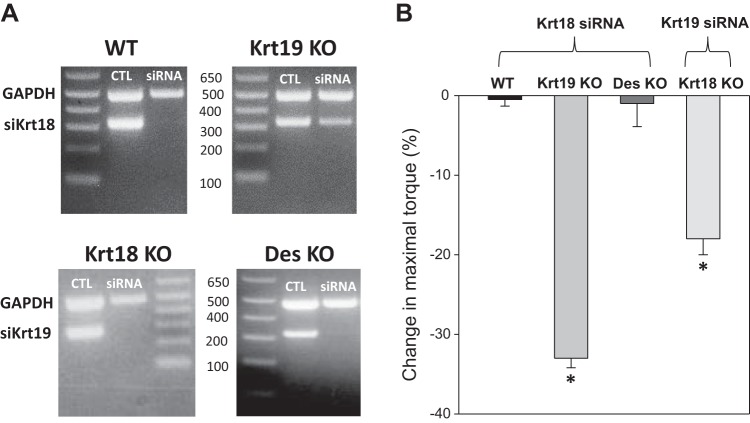Fig. 5.
The reduction of keratin 18 (Krt18) and Krt19 increases susceptibility to injury. Wild-type (WT) tibialis anterior (TA) muscles and TA muscles lacking either Krt19 or desmin were electroporated with siRNA targeting Krt18 mRNA, and Krt18 knockout (KO) TA muscles were electroporated with siRNA targeting Krt19 mRNA. A: RT-PCR assays show that Krt18 and Krt19 mRNAs are significantly reduced by targeted siRNAs introduced 3 days prior. B: torque generated by the dorsiflexors of the hindlimb was assayed in vivo before and after eccentric injury (n = 5/group; see materials and methods). Results show that knockdown of either Krt18 in the Krt19-KO muscle or Krt19 in the Krt18-KO muscle results in a significant increase in injury (as measured by loss in maximal isometric force after injury) but that knockdown of Krt18 in WT or Des-KO muscle has no significant effect. [*P < 0.05, one-way ANOVA followed by pairwise multiple comparison procedures (Holm-Sidak method); n = 5–6 mice/condition]. Thus, both Krt18 and Krt19 are needed at approximately control levels to protect muscle against eccentric injury.

